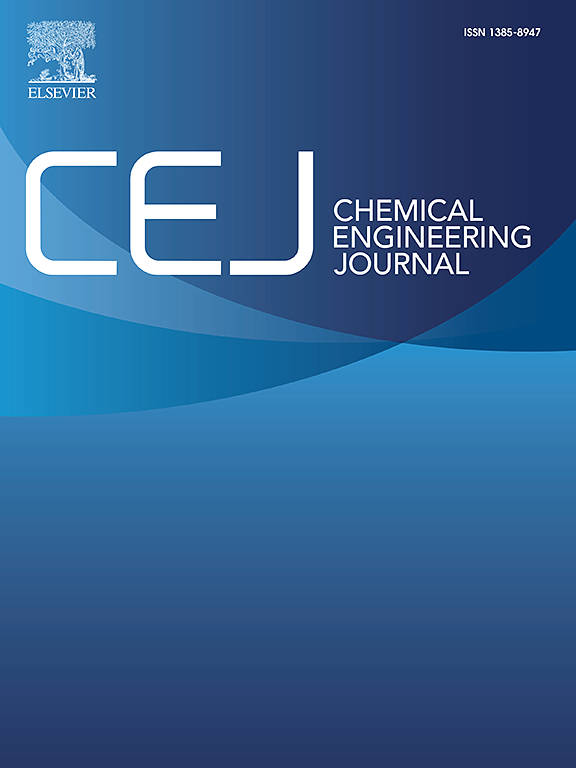Conductive bismuth-based metal-organic frameworks with dual redox sites for efficient capacitive deionization
IF 13.3
1区 工程技术
Q1 ENGINEERING, CHEMICAL
引用次数: 0
Abstract
Bismuth (Bi), possessing intrinsic faradaic properties, has garnered significant attention as a highly promising anode material for capacitive deionization (CDI) due to its superior capacity and strong Cl− affinity. However, the substantial volume expansion and pronounced pulverization of the Bi electrode during the chlorination/dechlorination conversion process significantly compromise its cycling stability. Herein, conductive porous Bi-based metal–organic framework (Bi-Fc-MOF) nanoflowers with dual redox active sites were strategically designed and fabricated as CDI anodes, leveraging the organic linker coordination effect. The organic linker strategically disperses Bi centers at the molecular level within the framework, effectively preventing the agglomeration and fragmentation of Bi particles and thus ensuring long-term cycling performance. The synergistic mechanism involving Bi node conversion reactions and the Fe2+/Fe3+ redox couple charge compensation effect from the ferrocene center enhances the Cl− capture. Owing to these unique and advantageous features, Bi-Fc-MOF exhibits exceptional dechlorination capacity (107.21 mg g−1), high charge efficiency (0.93), and outstanding long-term cycling stability (92.26 % after 50 cycles). Impressively, the systematic ex-situ characterization revealed the synergistic Cl− storage mechanism of the conversion reaction-coupled charge compensation effect in Bi-Fc-MOF. This study offers innovative insights into the design and development of advanced high-performance CDI anode materials

求助全文
约1分钟内获得全文
求助全文
来源期刊

Chemical Engineering Journal
工程技术-工程:化工
CiteScore
21.70
自引率
9.30%
发文量
6781
审稿时长
2.4 months
期刊介绍:
The Chemical Engineering Journal is an international research journal that invites contributions of original and novel fundamental research. It aims to provide an international platform for presenting original fundamental research, interpretative reviews, and discussions on new developments in chemical engineering. The journal welcomes papers that describe novel theory and its practical application, as well as those that demonstrate the transfer of techniques from other disciplines. It also welcomes reports on carefully conducted experimental work that is soundly interpreted. The main focus of the journal is on original and rigorous research results that have broad significance. The Catalysis section within the Chemical Engineering Journal focuses specifically on Experimental and Theoretical studies in the fields of heterogeneous catalysis, molecular catalysis, and biocatalysis. These studies have industrial impact on various sectors such as chemicals, energy, materials, foods, healthcare, and environmental protection.
 求助内容:
求助内容: 应助结果提醒方式:
应助结果提醒方式:


